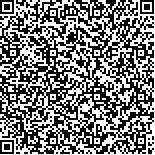本文已被:浏览 931次 下载 424次
投稿时间:2022-04-07 网络发布日期:2022-12-20
投稿时间:2022-04-07 网络发布日期:2022-12-20
中文摘要: 目的 探讨视神经脊髓炎(NMO)合并慢性失眠患者的血清水通道蛋白4(AQP-4)抗体、细胞炎症因子水平及其与NMO复发的相关性。方法 选取2017年2月至2019年6月于武汉科技大学附属孝感医院神经内科住院确诊的NMO患者103例进行回顾性研究,根据是否有慢性失眠将患者分成失眠组(54例)和无失眠组(49例)。检测两组患者血清AQP-4抗体、白细胞介素(IL)-6、IL-27水平,随访两组患者2年内复发率、脊髓受累节段数及扩展残疾状况评分(EDSS)。利用受试者工作特征曲线(ROC)计算血清AQP-4抗体、IL-6及IL-27水平预测NMO患者复发的诊断价值。结果 失眠组患者血清AQP-4抗体、IL-6水平明显高于无失眠组(P<0.05),IL-27水平明显低于无失眠组(P<0.05)。失眠组患者2年内NMO复发率明显高于无失眠组(46.3% vs 20.4%, P<0.05),且复发患者脊髓受累节段数和EDSS评分均明显高于无失眠组(P<0.05)。血清AQP-4抗体、IL-6、IL-27对NMO复发预测的ROC曲线下面积(AUC)及其95%CI分别为0.867(0.738~0.984)、0.853(0.776~0.924)、0.850(0.710~0.981)。NMO两年未复发率,在低AQP-4抗体、低IL-6、高IL-6水平患者分别高于高AQP-4抗体、高IL-6、低IL-27水平患者(P<0.05)。结论 NMO复发与慢性失眠相关,可能与长期慢性失眠导致的血清AQP-4抗体和IL-6升高及IL-27降低有一定关系。慢性失眠对两年内NMO复发具有重要的提示价值。
Abstract:Objective To investigate the levels of serum aquaporin 4(AQP-4) antibodies and cytoinflammatory factors in patients with neuromyelitis optica(NMO) complicated with chronic insomnia and their correlation with the recurrence of NMO. Methods A total of 103 NMO patients diagnosed in the Department of Neurology of Xiaogan Hospital Affiliated to Wuhan University of Science and Technology from February 2017 to June 2019 were selected for retrospective study. The patients were divided into insomnia group(n=54) and non-insomnia group(n=49) according to whether there was chronic insomnia. Serum AQP-4 antibody, interleukin(IL)-6, and IL-27 levels were detected in the two groups. The recurrence rate, number of spinal cord involved segments, and extended disability status score(EDSS) in the two groups were followed up for 2 years. Receiver operating characteristic curve(ROC) was used to calculate serum AQP-4 antibody, IL-6 and IL-27 levels to predict the diagnostic value of recurrence in NMO patients. Results The level of serum AQP-4 antibody and IL-6 in insomnia group was significantly higher than that in non-insomnia group(P<0.05), and the level of IL-27 was significantly lower than that in non-insomnia group(P<0.05). The relapse rate of NMO in the insomnia group was significantly higher than that in the non-insomnia group within 2 years(46.3% vs 20.4%, P<0.05), and the number of involved segments of spinal cord and EDSS score in the relapse group were significantly higher than those in the non-insomnia group(P<0.05). The area under the ROC curve(AUC) and 95%CI of serum AQP-4 antibody, IL-6 and IL-27 for predicting NMO recurrence were 0.867(0.738-0.984), 0.853(0.776-0.924) and 0.850(0.710-0.981), respectively. The annual non-recurrence rate of NMO2 was higher in patients with low AQP-4 antibody, low IL-6 and high IL-6 levels than in patients with high AQP-4 antibody, high IL-6 and low IL-27 levels(P<0.05). Conclusion The recurrence of NMO is related to chronic insomnia, which may be related to the increase of serum AQP-4 antibody and IL-6 and the decrease of IL-27 caused by long-term chronic insomnia. Chronic insomnia has an important value in indicating the recurrence of NMO within 2 years.
文章编号: 中图分类号: 文献标志码:A
基金项目:湖北省孝感市自然科学基金(XGKJ2021010061)
附件
| 作者 | 单位 |
| 王锋1 | 1. 武汉科技大学附属孝感医院检验科,湖北 孝感 432100 |
| 胡小平1 | 1. 武汉科技大学附属孝感医院检验科,湖北 孝感 432100 |
| 田茹萍1 | 1. 武汉科技大学附属孝感医院检验科,湖北 孝感 432100 |
| 杨欢2 | 2. 武汉科技大学附属孝感医院神经内科,湖北 孝感 432100 |
| Author Name | Affiliation |
| WANG Feng*, HU Xiao-ping, TIAN Ru-ping, YANG Huan | *Laboratory Department, Xiaogan Hospital Affiliated to Wuhan University of Science and Technology, Xiaogan, Hubei 432100, China |
引用文本:
王锋,胡小平,田茹萍,等.合并慢性失眠患者血清水通道蛋白4抗体及炎症因子与视神经脊髓炎复发的相关性[J].中国临床研究,2022,35(12):1667-1671,1675.
王锋,胡小平,田茹萍,等.合并慢性失眠患者血清水通道蛋白4抗体及炎症因子与视神经脊髓炎复发的相关性[J].中国临床研究,2022,35(12):1667-1671,1675.
